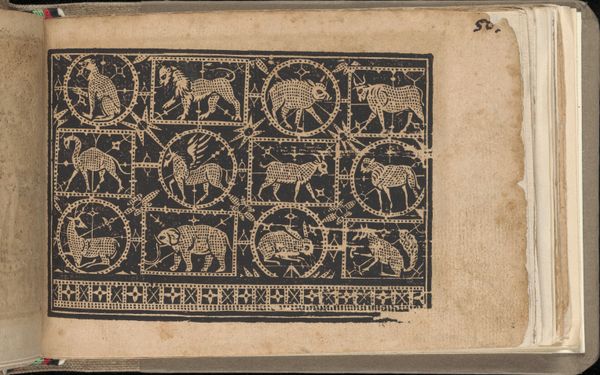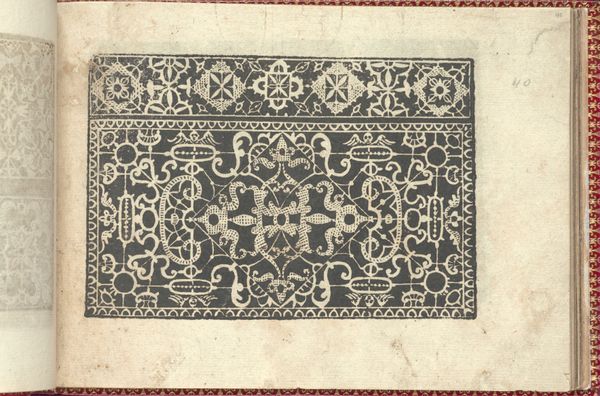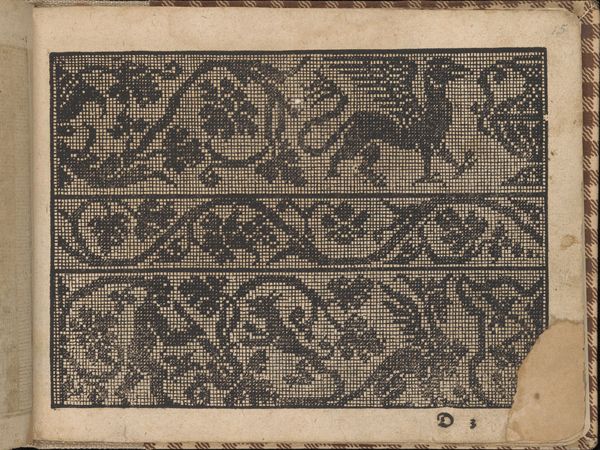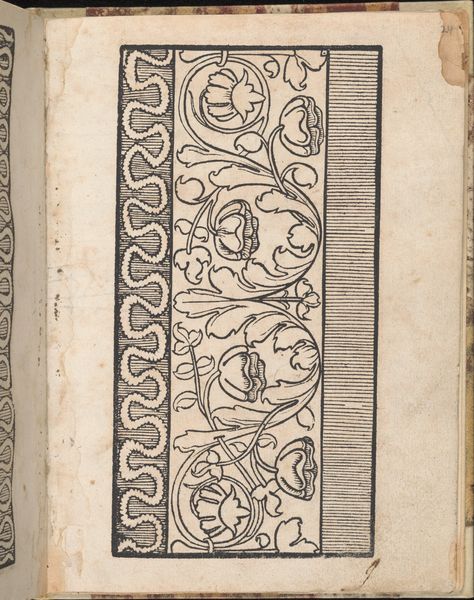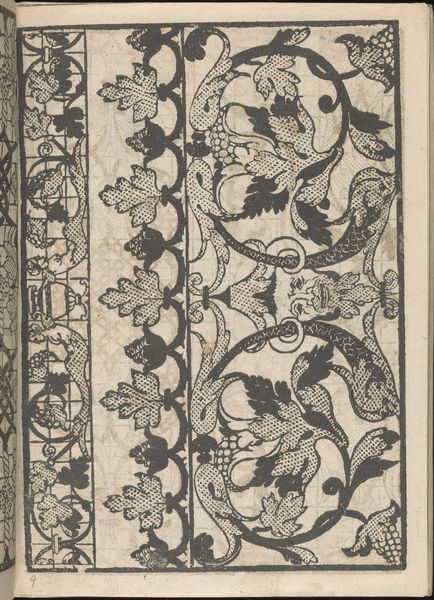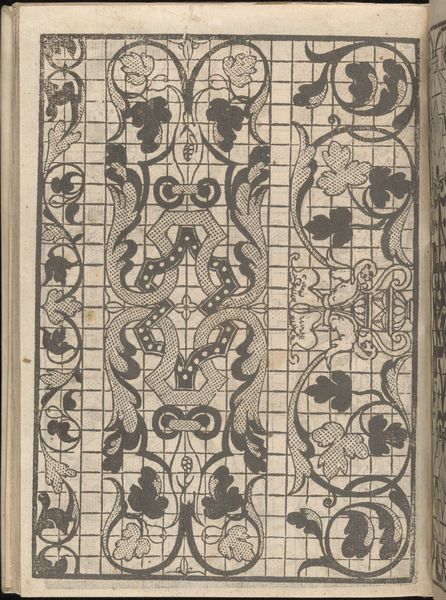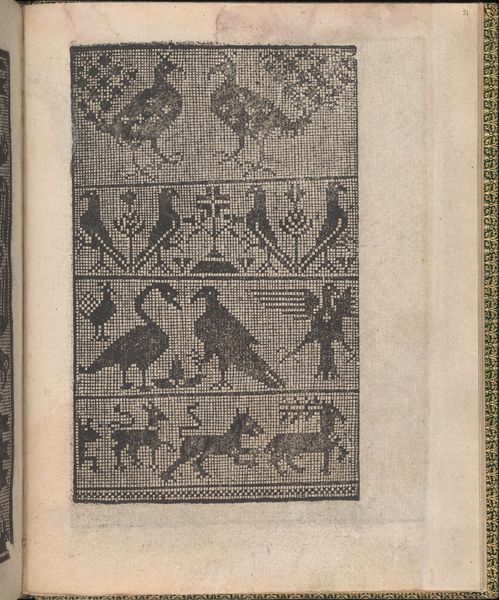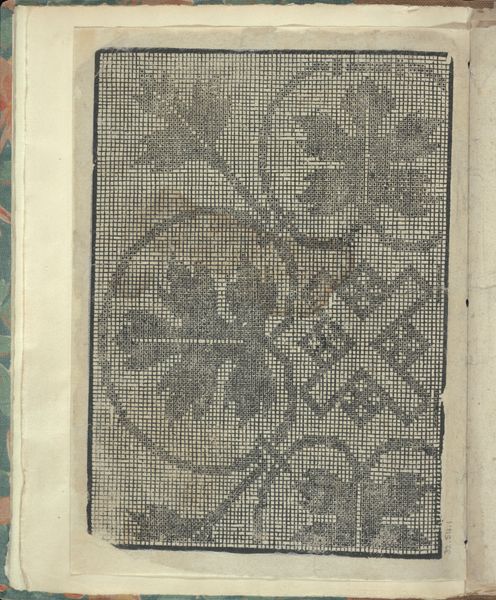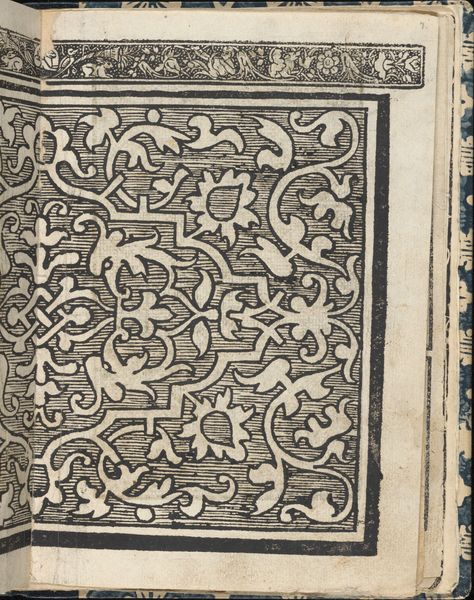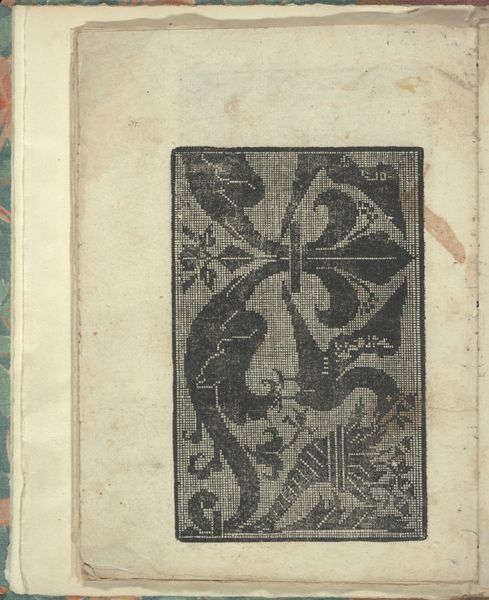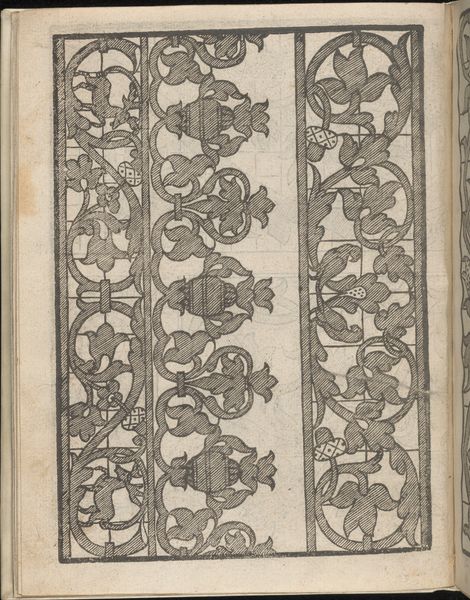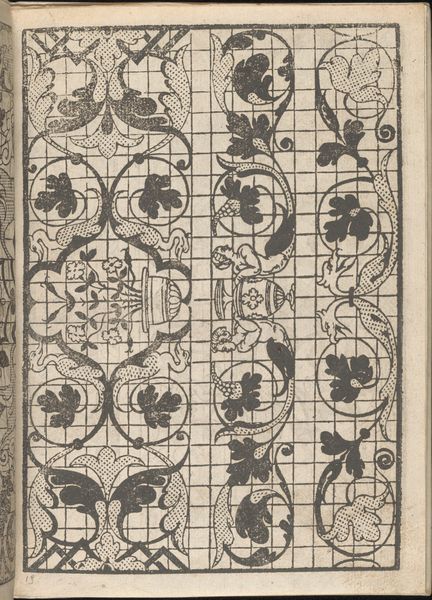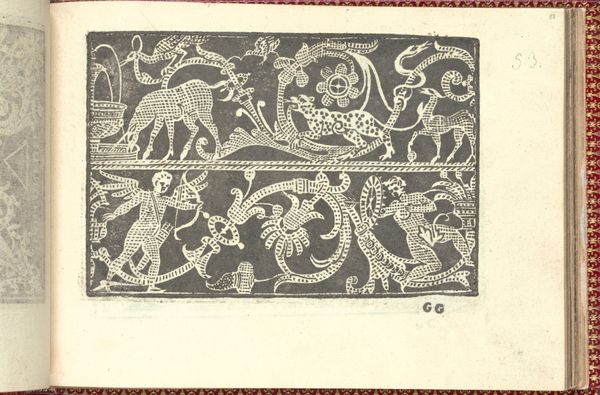
Corona delle Nobili et Virtuose Donne: Libro I-IV, page 116 (recto) 1601
0:00
0:00
drawing, print, engraving
#
drawing
#
medieval
# print
#
geometric
#
engraving
Dimensions: Overall: 5 1/2 x 7 11/16 in. (14 x 19.5 cm)
Copyright: Public Domain
Cesare Vecellio created this page in the late 16th century using ink on paper. But it's not just any page; it's a woodblock print, meaning the design was carved into a block of wood, inked, and then pressed onto the paper. Look closely, and you'll see a grid of animals, each carefully rendered in white against a dark background. The contrast is striking, and the repetitive pattern almost has a textile quality. But how was it made? The process of woodblock printing requires immense skill. Each line and curve must be painstakingly carved into the wood, and the slightest mistake could ruin the entire block. This kind of labor-intensive production was common in the 16th century, and it speaks to the value placed on handcraftsmanship at the time. This wasn't just a means of mass production; it was a way of showcasing skill and artistry. So, when we look at this page, let’s appreciate it not just as a pretty picture, but as a testament to the labor, skill, and cultural values of the past.
Comments
No comments
Be the first to comment and join the conversation on the ultimate creative platform.
